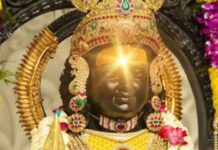Forecasting and prevention of floods are the responsibilities of the Central Water Commission (CWC), Ministry of Water Resources. However, India Meteorological Department (IMD) supports flood warning services of Central Water Commission (CWC) by providing observed and predicted rainfall. In order to meet specific requirements of flood warnings by CWC, India Meteorological Department (IMD) operates Flood Meteorological Offices (FMOs) at 13 locations viz., Agra, Ahmedabad, Asansol, Bhubaneshwar, Guwahati, Hyderabad, Jalpaiguri, Lucknow, New Delhi, Patna, Srinagar, Bengaluru and Chennai. Apart from this, IMD also supports Damodar Valley Corporation (DVC) by providing Quantitative Precipitation Forecast (QPF) for Damodar river basin areas for their flood forecasting activities. Flood Meteorological Offices (FMO) provide meteorological support to the CWC for issuing flood warnings well in advance in respect of 153 river basins.
CWC issues flood forecasts as a non-structural measure of flood management, to concerned State Governments depending on the requisition from them at identified locations. CWC also issues inflow forecasts to identified reservoirs for proper reservoir regulation. Flood forecast formulation methodology used by CWC includes:
Conventional statistical correlation methodology: It includes gauge to gauge correlation between base station (upstream of forecasting station) and forecasting station. This method provides advance warning time from 6 to 24 hrs depending upon the terrain. IMD provides 3 day Quantitative Precipitation Forecast (QPF) in ranges of 0, 0.1-10mm, 11-25 mm, 26-37mm, 38-50 mm, 51-75 mm, 76-100 mm and >100 mm for various river sub-basins to the concerned Divisional Flood Control Room of CWC through their Flood Meteorological Offices spread all over the country.
Rainfall-Runoff mathematical modeling technology: It includes mathematical modeling of river basin based on rainfall runoff methodology. Input taken is rainfall provided by IMD through its Automatic Weather Station (AWS) & Automatic Rain Gauge (ARG) stations and CWC telemetry stations. The three days advance forecast is generated using various available rainfall data products as a major input into the system like IMD Gridded Rainfall product and other global rainfall products such as GSMaP (Global Satellite Mapping of Precipitation), GPM (Global Precipitation Measurement) and the IMD forecasted rainfall data (WRF- Weather Research and Forecast, GFS- Global Forecast System). Numerical Weather Prediction (NWP) model products viz. Weather Research and Forecast (WRF) model which is given for 3 days and Global Forecasting System (GFS) model product which is given for 10 days are seamlessly shared by IMD for use in mathematical models by CWC. Mathematical model has been used for formulation of advisories and these advisories are shared with stake holders using dedicated website.
Besides this, CWC is also providing inundation forecast in the same platform using 2-dimensional models for main Brahmaputra and is also shared with beneficiaries through the same website.
Modernization of dissemination of flood forecasts: Dissemination of flood forecasts have been modernised by having a dedicated website. The flood information is also shared via various social media platforms of CWC Flood Forecast dissemination system. Daily Flood Situation Report cum Advisories are also shared with all stake holders as well as general public. CWC has signed an MOU with M/s Google Inc for using their vast repository of high resolution Digital Elevation Models and the power of dissemination to send alerts regarding inundation through Google Platform using the flood forecasts issued by CWC.
Flood Forecasting by CWC uses all the latest technology including remote-sensing, Geographical Information System (GIS), Internet, Artificial Intelligence and Machine Learning in development/ running/ formulation and calibration of Mathematical models and for providing Inundation Alerts which are closely at par with international standards.
At the end of flood season CWC prepares an Appraisal of flood forecasting activity in which the accuracy/performance of the forecasts are compiled. In conventional methodology of forecast, a level forecast is deemed to be accurate if the forecasted level is within +/- 0.15 m from the actual river water level attained at the forecasted time. Similarly, for inflow forecast, if the forecasted inflow is within +/- 20% from the actual inflow into the reservoir. Statement showing the accuracy of the system for the period 2000-2020 is given in Annexure-I.
| Annexure I
FLOOD FORECASTING PERFORMANCE FROM 2000 TO 2020 (as provided by Central Water Commission) |
|||||||||
| Year | No.of Level Forecasts issued | No.of Inflow Forecasts issued | Total No.of Forecasts issued | ||||||
| Total | Within +/-15 cm of deviation from actual | Accuracy (%) | Total | Within +/-20% cumec of deviation from actual | Accuracy (%) | Total | Within +/-15 cm or +/-20% cumec of deviation from actual | Accuracy (%) | |
| 2000 | 5622 | 5504 | 97.90 | 821 | 747 | 90.99 | 6443 | 6251 | 97.02 |
| 2001 | 4606 | 4533 | 98.42 | 857 | 809 | 94.40 | 5463 | 5342 | 97.79 |
| 2002 | 3618 | 3549 | 98.09 | 623 | 602 | 96.63 | 4241 | 4151 | 97.88 |
| 2003 | 5989 | 5789 | 96.66 | 611 | 586 | 95.91 | 6600 | 6375 | 96.59 |
| 2004 | 4184 | 4042 | 96.61 | 705 | 654 | 92.77 | 4889 | 4696 | 96.05 |
| 2005 | 4323 | 4162 | 96.28 | 1295 | 1261 | 97.37 | 5618 | 5423 | 96.53 |
| 2006 | 5070 | 4827 | 95.21 | 1593 | 1550 | 97.30 | 6663 | 6377 | 95.71 |
| 2007 | 6516 | 6339 | 97.28 | 1707 | 1651 | 96.72 | 8223 | 7990 | 97.17 |
| 2008 | 5670 | 5551 | 97.90 | 1021 | 1003 | 98.24 | 6691 | 6554 | 97.95 |
| 2009 | 3343 | 3298 | 98.65 | 667 | 629 | 94.30 | 4010 | 3927 | 97.93 |
| 2010 | 6491 | 6390 | 98.44 | 1028 | 988 | 96.11 | 7519 | 7378 | 98.12 |
| 2011 | 4848 | 4795 | 98.91 | 1143 | 1109 | 97.03 | 5991 | 5904 | 98.55 |
| 2012 | 4200 | 4136 | 98.47 | 831 | 803 | 96.63 | 5031 | 4939 | 98.17 |
| 2013 | 5741 | 5471 | 95.30 | 1319 | 1289 | 97.73 | 7060 | 6760 | 95.75 |
| 2014 | 3884 | 3804 | 97.94 | 888 | 863 | 97.18 | 4772 | 4667 | 97.80 |
| 2015 | 3500 | 3429 | 97.97 | 572 | 562 | 98.25 | 4072 | 3991 | 98.01 |
| 2016 | 4969 | 4891 | 98.43 | 1270 | 1057 | 83.23 | 6239 | 5948 | 95.34 |
| 2017 | 5085 | 4975 | 97.84 | 1212 | 926 | 76.40 | 6297 | 5901 | 93.71 |
| 2018 | 4969 | 4871 | 98.03 | 1882 | 1624 | 86.29 | 6851 | 6495 | 94.80 |
| 2019 | 6004 | 5773 | 96.15 | 3750 | 2678 | 71.41 | 9754 | 8451 | 86.64 |
| 2020 | 8243 | 8133 | 98.67 | 3478 | 3065 | 88.13 | 11721 | 11198 | 95.54 |
| Average | 5089 | 4965 | 97.56 | 1299 | 1165 | 89.68 | 6388 | 6129 | 95.95 |
This information was given by Dr. Harsh Vardhan, Union Minister for Science & Technology, Earth Sciences and Health & Family Welfare in a written reply in Lok Sabha










































